A UNIQUE NAME
'Palatka' is a contraction of a Native American Indian word meaning 'cow crossing' or 'cow ford'. The original was some variation of 'Pilaklikaha' or 'Pilotaikita.' The City Charter, approved on January 8, 1853, had the name spelled 'PAlatka', sparking a debate as to the "correct" spelling which would last another twenty-two years until the U. S. Post Office officially changed the spelling to 'Palatka' on May 24, 1875.
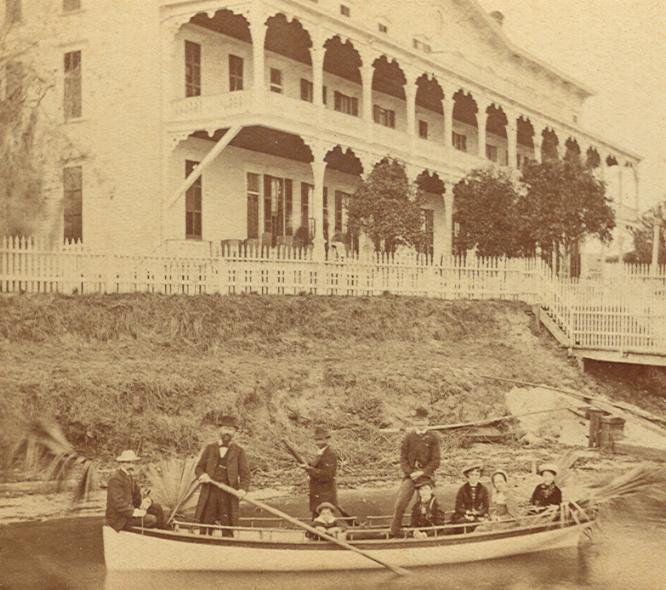
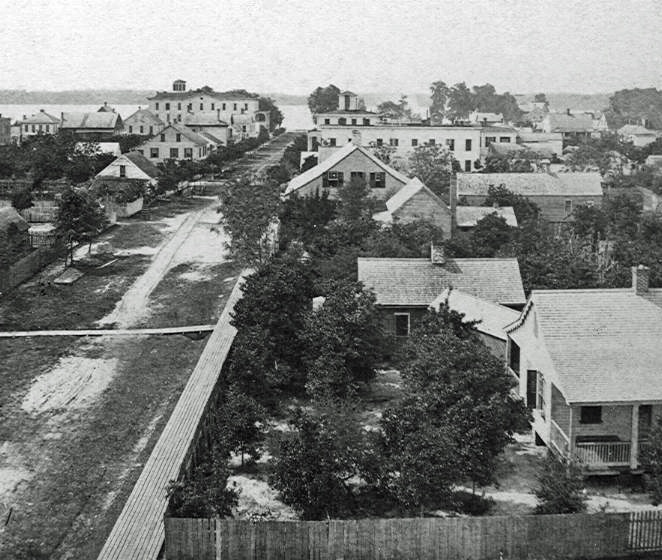
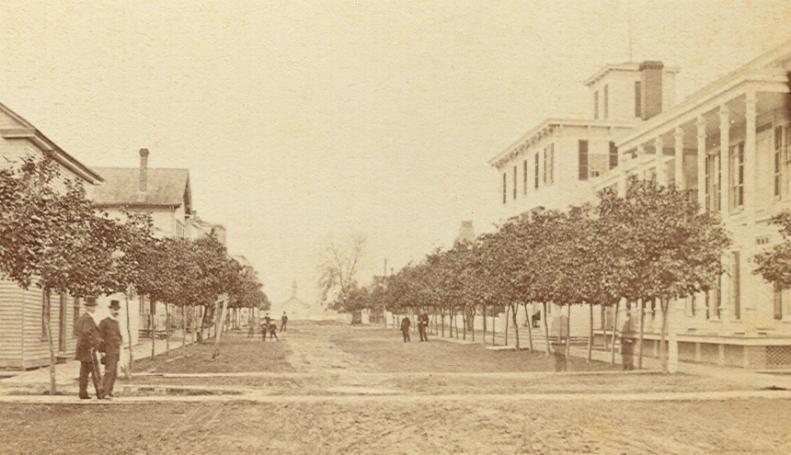
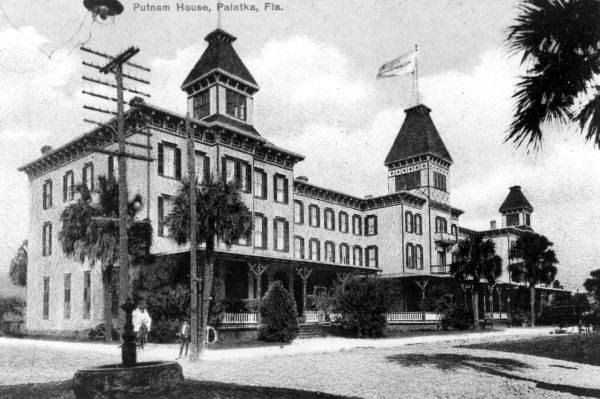
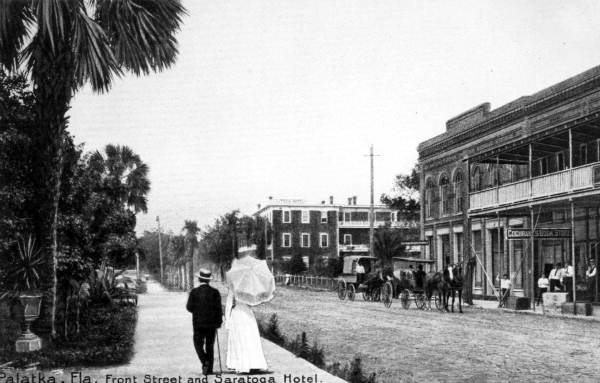
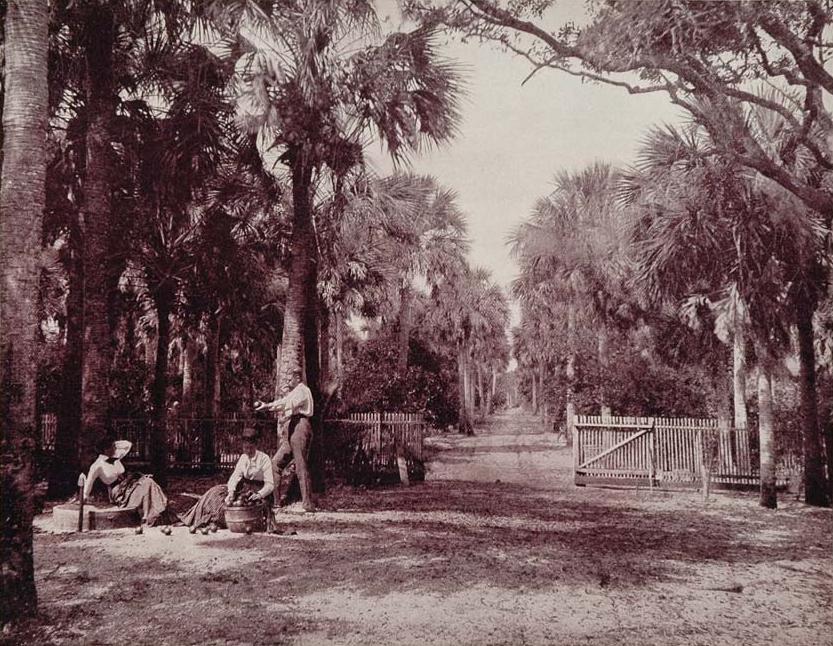
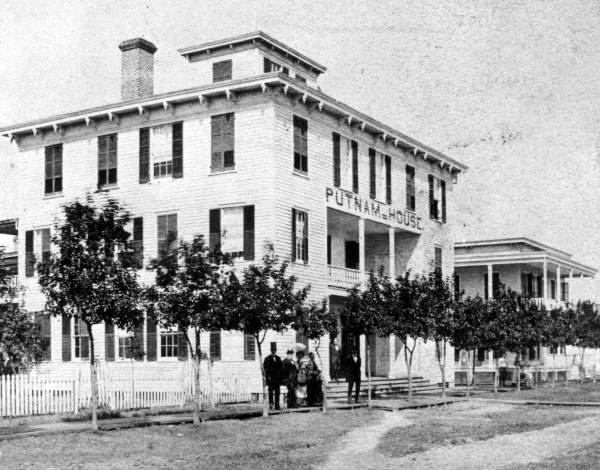
1655-1910
As early as 1655 the Spanish were developing Palatka, as well as Gainesville and Tallahassee into the state's three principal ranching areas to feed settlers, particularly in the St. Augustine area where the slaughterhouses were located. Palatka became the main forging point for the cattle to cross the St. Johns River on their way to the slaughterhouse.
In 1763 when the British took possession of Florida all Spanish land holdings were declared null and void and the Spanish left the state.
On an expedition in April 1774 William Bartram, a British Botanist, wrote of finding an Indian village on the site of present day Palatka. The village included a large cultivated orange grove and several hundred acres of corn, potatoes, beans, squash, melons and tobacco.
After the war for Independence broke out Florida became a haven for loyal British subjects and Florida population swelled from 3,000 in 1776 to 17,000 in 1784. One such immigrant, Joshua Gray, an unmarried mulatto farmer and Indian interpreter received 1,500 acres, which is known as the Palatka Tract today or "Gray's Place".
With the return of Florida to Spain in 1784 the British for the most part left the state and the population declined to less than 2,000. Gray abandoned the Palatka Tract. However, the Spaniards were anxious to have Florida settled and adopted a very liberal settlement policy allowing anyone who would swear allegiance to the Spanish government to settle in Florida. Based upon this, Gray returned to his home in the 1790s on the west bank of the St. Johns River. Although he never acquired title, Gray lived in Palatka until 1804 working as an agent for the trading firm of Panton and Leslie. He supervised the company cattle crossing the St. Johns River in route to St. Augustine.
On August 3, 1818, the Spanish Governor, Coppinger, conveyed title of Gray's Place to Bernardo Segui, a St. Augustine merchant and Mayor. Segui passed title to George Flemming in January 1819.
When Florida was transferred to the United States in 1821, development of central Florida increased dramatically. Palatka was the southernmost point in the river where large oceangoing vessels could venture. Below Palatka became the main jumping off point into Florida s interior either by cart or by small boat further down the St. Johns or Oklawaha Rivers.
In August 1821, Belton A. Copp, a Connecticut Attorney, bought "Gray's Place" from Fleming to use as a jumping off place for the settlement of the Alachua (Gainesville) area which was being heavily promoted in the Northeast.
In 1822, a ferry was begun between Palatka and St. Augustine and an improved road was built between Palatka and Alachua.
In 1827, a post office was built and Palatka replaced Picolata to the North as the major transportation center on the St. Johns River. The army constructed warehouses in Palatka in 1827 where provisions were deposited for further shipment down river and into the interior.
With the Seminole Indian unrest, which began in 1826 the influx of settlers again reversed and the post office was closed in 1829, due to the decrease in population.
In December 1835, Seminoles attacked and burned Palatka and the white settlers from the entire St. Johns River valley fled to the safety of St. Augustine.
In the early 1840s, Fort Shannon was built in Palatka and served as the military headquarters of the Central Florida District. As such it was built as a supply depot and staging area and was not fortified, as were most other forts deeper in the interior. The building at 110 Madison Street, which was moved from 224 North First Street, across from the Holiday Inn, served as the officers' quarters of the fort, and is the oldest building in Palatka.
By 1850, Fort Shannon had been turned over to the civilian population and settlers were once again arriving in large numbers to venture into the Florida interior. By 1850, Palatka's population reached 200.
On April 3, 1851, Robert Raymond Reid bought Palatka for $5,000 intending to subdivide to small parcels; however, he overextended himself and declared bankruptcy. The land was transferred to Issac H. Bronson, Federal Judge for the Eastern Circuit in Florida, who served as trustee.
On January 8, 1853, the City of Palatka was chartered by the State of Florida. During the 1850s Palatka became the major center for transportation, freight, lumber, citrus and tourism on the St. Johns River. The steamboat traffic on the St. Johns and its tributaries, particularly the Ocklawaha, secured Palatka's position as the Hub of the transportation network into and out of central Florida.
During the Civil War the Union forces occupied the town after federal gunboats gained control of tile St. Johns River, but this period had no major impact on the community.
1865 to 1895 marks the golden age of Palatka, a time when Palatka rivaled Jacksonville as the major port on the St. Johns.
By 1885, seven steamboat lines operated out of Palatka, including Hubbard Hart's Ocklawaha River Line and the Charleston, Savannah Line of Ocean Steamers.
By the late 1870s the wharves extended across the entire riverfront with as many as forty ships waiting in the harbor to load or unload their cargoes.
However, increasingly the railroads expanded into the interior and the freight was shipped directly by rail. Palatka's decreasing importance in freight travel was offset with its prominence in the citrus industry. By the late 1880's Palatka boasted as being the hub of the cities citrus industry.
During the 1880s Palatka attracted five new railroad lines and established itself once again as central Florida's transportation center. During this same period, steamer freight influence in Palatka declined. With the decline of the freight industry, Palatka's commerce became more dependent on the tourists, lumber and citrus industries. Still a well-balanced economy.
Palatka's great fire occurred November 7, 1884 virtually wiping out the entire business district. However, brick buildings replaced the wood frame structures that were destroyed and Palatka emerged a more refined city.
By 1890, Palatka boasted eight first class hotels, the largest of which the Putnam House contained 500 rooms. Winter visitors-included President Grover, Cleveland and other influential people. The city's winter residents included many rich industrialists such as James R. Mellon of Pittsburgh, who donated the library to the city.
With Palatka prosperity came residential growth and three neighborhoods developed. "The Hammock" south of downtown along River Street, Emmett and Kirby were the most affluent. "Reid's Garden" north of the business district contained the home built by Judge Bronson and was noted for its costly residences on large landscaped lots. However, the homes while spacious, were for the most part non-ornamental.
The third district "New Town" was west of the business district and was the area where the city's black population resided.
The area southwest of the city known as "The Heights" became a major suburb of Palatka and for a period during the 1880s was an incorporated municipality.
The 1890s ended Palatka's golden age. The railroad, while continuing to be of importance, could no longer compete with Jacksonville. The steamships were reduced to operating only during the tourist season.
The "Great Freezes" of 1894-1895 virtually wiped out Palatka's citrus industry forever.
After the great freeze Palatka expanded industrially expanding the number of industries especially those dependent upon wood or its byproducts. Wilson Cypress Company became the largest cypress mill in the world producing 80,000 feet of lumber and 60,000 shingles daily. By 1910 Palatka had become a major industrial center.